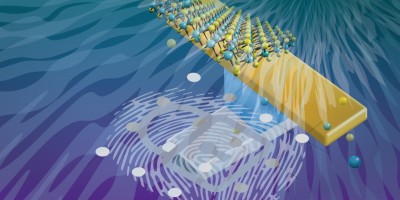Despite concrete being the most prominent building material of the twentieth century, the cultural heritage relevance of concrete buildings and the importance of their preservation is not widely recognized. The European Union project InnovaConcrete’s purpose is to develop nanotechnology-based treatments for concrete preservation and to increase citizen awareness around the importance of concrete-based heritage.

References
Concrete needs to lose its colossal carbon footprint. Nature 597, 593–594 (2021).
Zarzuela, R. et al. Producing C-S-H gel by reaction between silica oligomers and portlandite: a promising approach to repair cementitious materials. Cem. Concr. Res. 130, 106008 (2020).
Prabhu, A. et al. A patchy particle model for C-S-H formation. Cem. Concr. Res. 152, 106658 (2022).
Perko, J. et al. The importance of physical parameters for the penetration depth of impregnation products into cementitious materials: modelling and experimental study. Constr. Build. Mater. 257, 119595 (2020).
United Nations Educational, Scientific and Cultural Organization. Decisions Adopted at the 31st Session of the World Heritage Committee. United Nations Educational, Scientific and Cultural Organization https://whc.unesco.org/archive/2007/whc07-31com-24e.pdf (2007).
Zarzuela, R., Luna, M., Carrascosa, L. A. M. & Mosquera, M. J. in Advanced Materials for the Conservation of Stone 259–275 (Springer International Publishing, 2018).
Carrascosa, L. A. M., Zarzuela, R., Badreldin, N. & Mosquera, M. J. A simple, long-lasting treatment for concrete by combining hydrophobic performance with a photoinduced superhydrophilic surface for easy removal of oil pollutants. ACS Appl. Mater. Interfaces 12, 19974–19987 (2020).
Waghmare, P. R., Gunda, N. S. K. & Mitra, S. K. Under-water superoleophobicity of fish scales. Sci. Rep. 4, 7454 (2014).
Ramírez-Guerrero, G., García-Onetti, J., Chica-Ruiz, J. A. & Arcila-Garrido, M. Social appreciation for the improvement of tourism management of 20th-century heritage: a methodological proposal. Int. J. Cult. Tour. Hosp. Res. 15, 522–546 (2021).
Acknowledgements
The work described in this manuscript has been performed under InnovaConcrete EC project, supported by funding from the European Union’s Horizon 2020 Research and Innovation Programme under Grant Agreement No. 760858. The authors acknowledge the work carried out by the 29 partners of the InnovaConcrete consortium.
Author information
Authors and Affiliations
Corresponding author
Ethics declarations
Competing interests
The authors declare no competing interests.
Additional information
Related links
InnovaConcrete: https://www.innovaconcrete.eu/
Rights and permissions
About this article
Cite this article
Mosquera, M.J., Zarzuela, R. & Luna, M. Advanced smart materials for preserving concrete heritage buildings. Nat Rev Mater 8, 74–76 (2023). https://doi.org/10.1038/s41578-022-00531-z
Published:
Issue Date:
DOI: https://doi.org/10.1038/s41578-022-00531-z
- Springer Nature Limited


